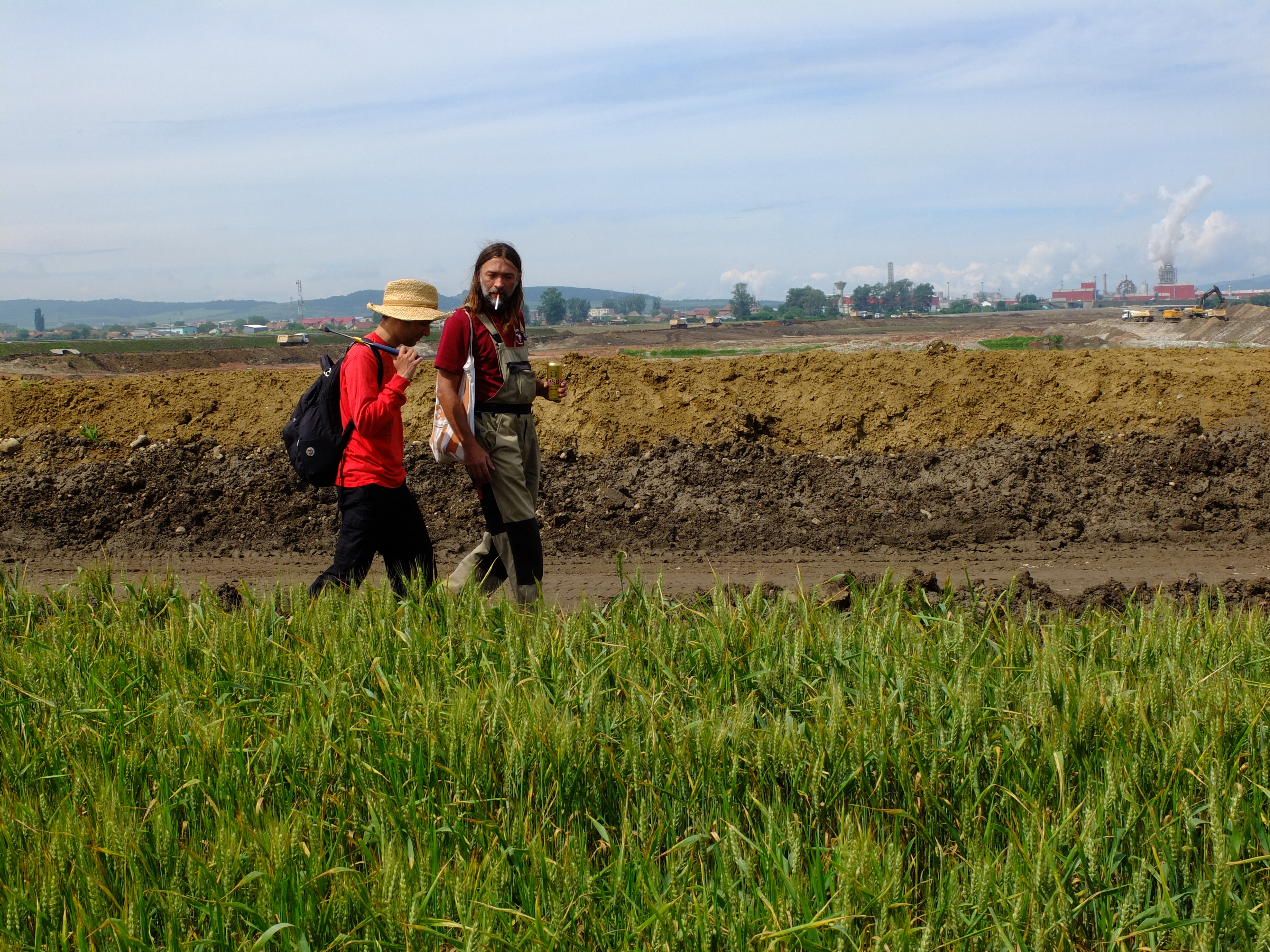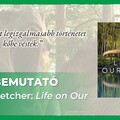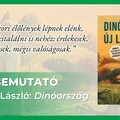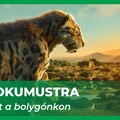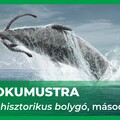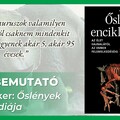Let’s start with the new year’s first surprise! The Rise and Fall of the Dinosaurs has been published just a few months ago by Park Könyvkiadó. I had a daring thought about it: what if I asked the author for an interview? Luckily, Steve gladly agreed to the proposal, making my day. He already has an exceptional career, actively takes part in popularizing paleontology, and he’s a really engaging individual – could you want anything more from an interviewee? Among other things we talked about the circumstances of his book’s creation, the uncrowned king of tyrannosaurs, T. rex... Of course, our famous Baron Nopcsa and the findings of Iharkút were also mentioned, moreover, we got an exclusive announcement! Give him a warm welcome!
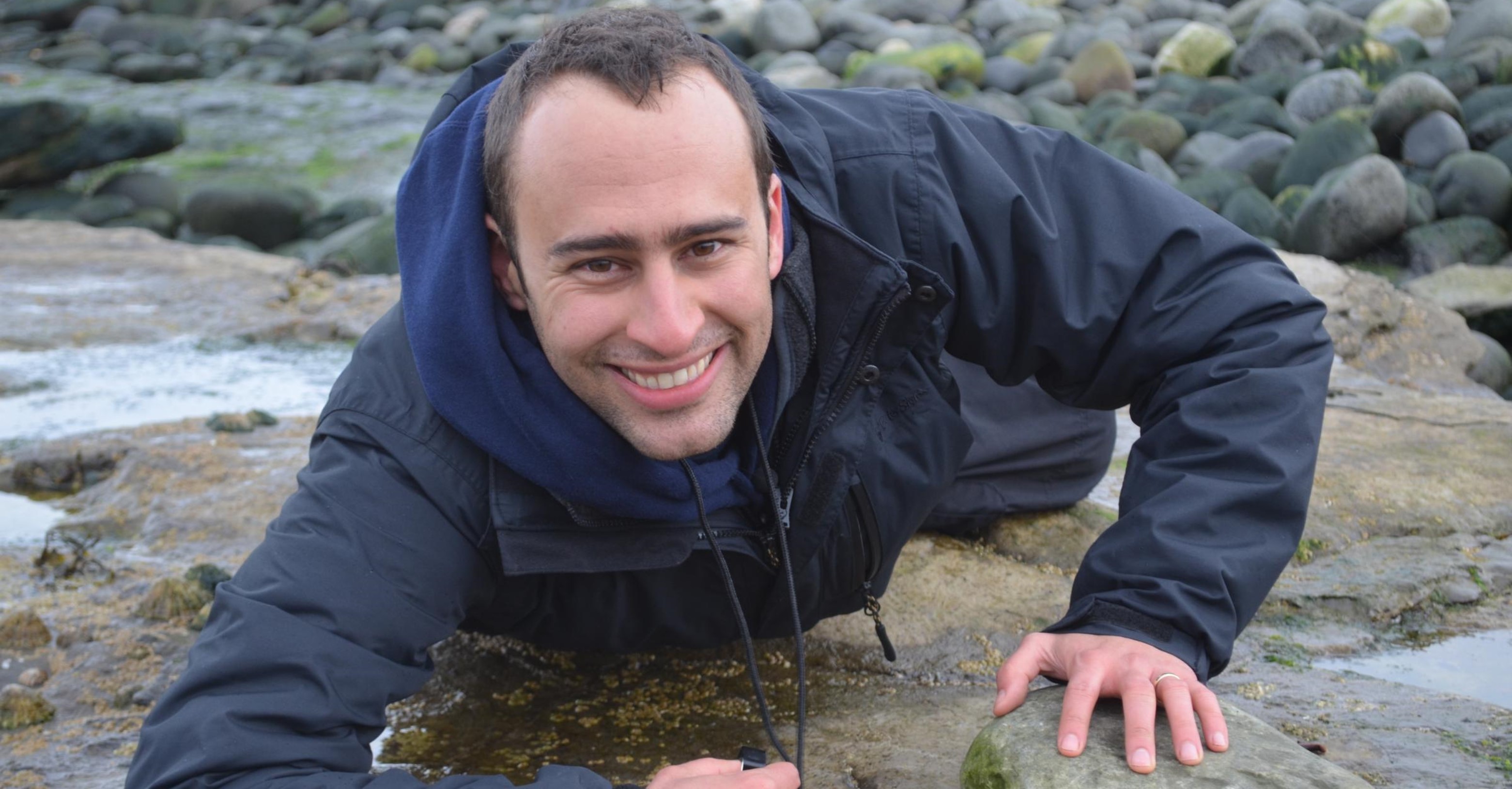
▲ Steve Brusatte (photo credit: The Herald)
A Kőzetek Naplója: Hi, Steve! Many thanks for taking the time for this interview! Please introduce yourself to the readers!
Steve: Hi! I’m Steve Brusatte. I’m a paleontologist and professor at the University of Edinburgh in Scotland. I’m one of those lucky people who gets to dig up dinosaurs for a living. And I also write books, like The Rise and Fall of the Dinosaurs, and consult on films, like Jurassic World.
A Kőzetek Naplója: Let’s run the mandatory circles first! How and when did the fascinating world of our prehistoric past make you interested in it? Why did you choose to be a paleontologist?
Steve: I was not very interested in science as a child. In fact, it was my least favorite class in school. But my youngest brother Chris loved science, especially dinosaurs. He turned his bedroom into a dinosaur museum. He owned every Jurassic Park toy and had hundreds of dinosaur books. Around the time I started high school, when I was 14 years old, I became fascinated by dinosaurs when I helped Chris with a school project.
A Kőzetek Naplója: The Rise and Fall of the Dinosaurs aims to take part in spreading scientific knowledge. When did you pledge yourself to the noble cause of being a science communicator?
Steve: I think communicating science is as important as doing scientific research. So I see myself as a half-time scientist and half-time communicator. Dinosaurs are inspirational. People love them, and they are a great way to reach people and connect with people and spread the joy of science. When I was a teenager I made a goal of one day writing a popular science dinosaur book, and eventually The Rise and Fall of the Dinosaurs was that book.
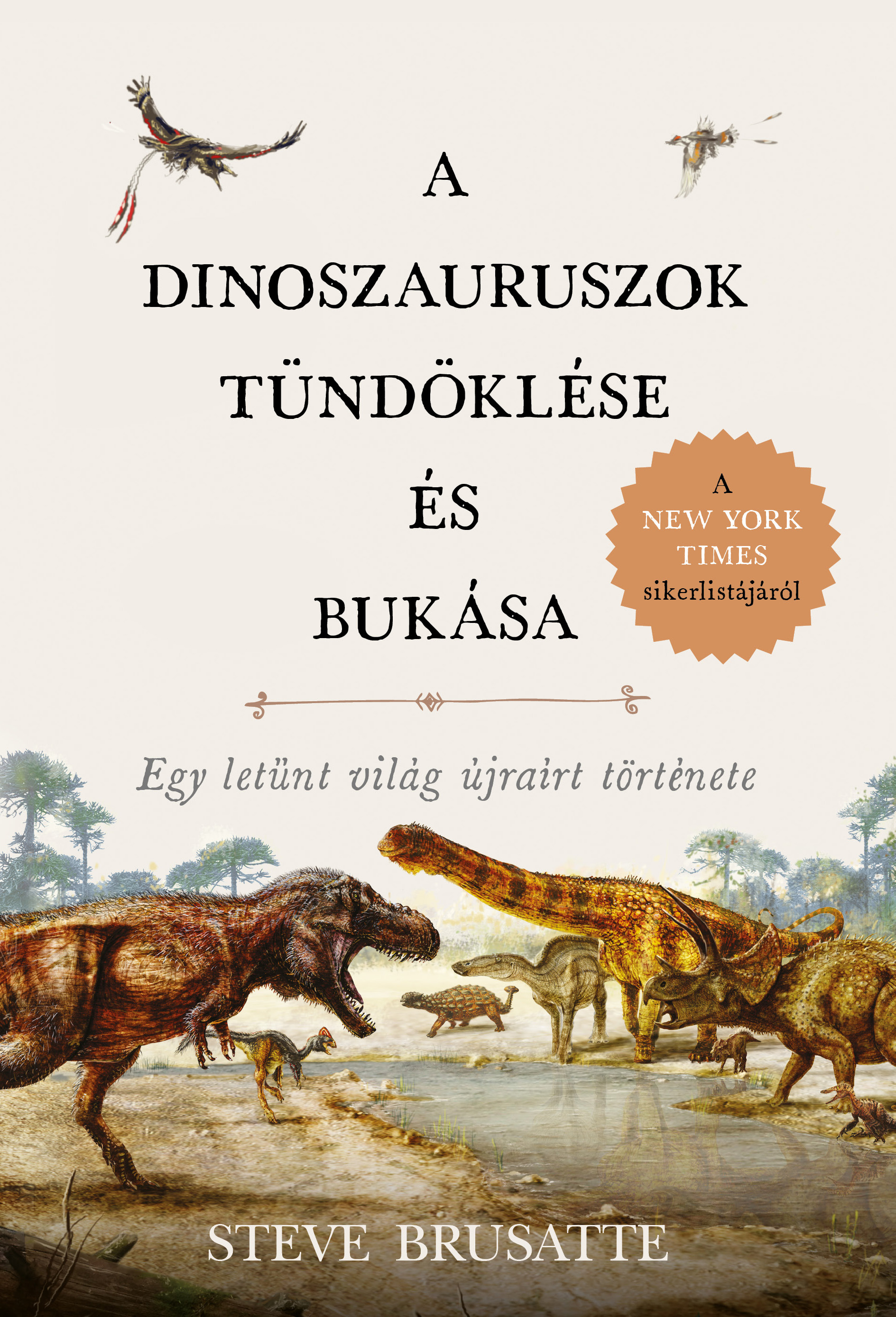
A Kőzetek Naplója: I think your book is rather exceptional, so congratulations! It was a New York Times bestseller, but such a feat is not an easy achievement… How big of a challenge did it pose to stay both understandable and authentic at the same time, all the while sprinkling in some humorous bits whenever possible?
Steve: Well thank you, I appreciate that, very much. I had a lot of fun writing the book, but it was also challenging, because I wanted to make sure it was accessible to a broad audience. This can be difficult with science books, because science can become very technical, with a lot of jargon. When I was writing, I kept imagining myself as a high school student. I wanted to write a book that would be both understanding and inspirational to me at that age.
A Kőzetek Naplója: Todd Marshall made the illustrations for your book. Why did you choose him?
Steve: Todd is one of the greatest paleoartists in the world, and also a really nice and cool guy. I’ve known Todd for many years and have always admired his art. He has a background in rock and roll art and video game art, so he is really good at developing characters, and giving his characters a spark, an edge, a brash personality. Without his art, my book would not have been successful. Dinosaurs are visual – you need to see them to become enthralled by them. Words alone can’t do it.
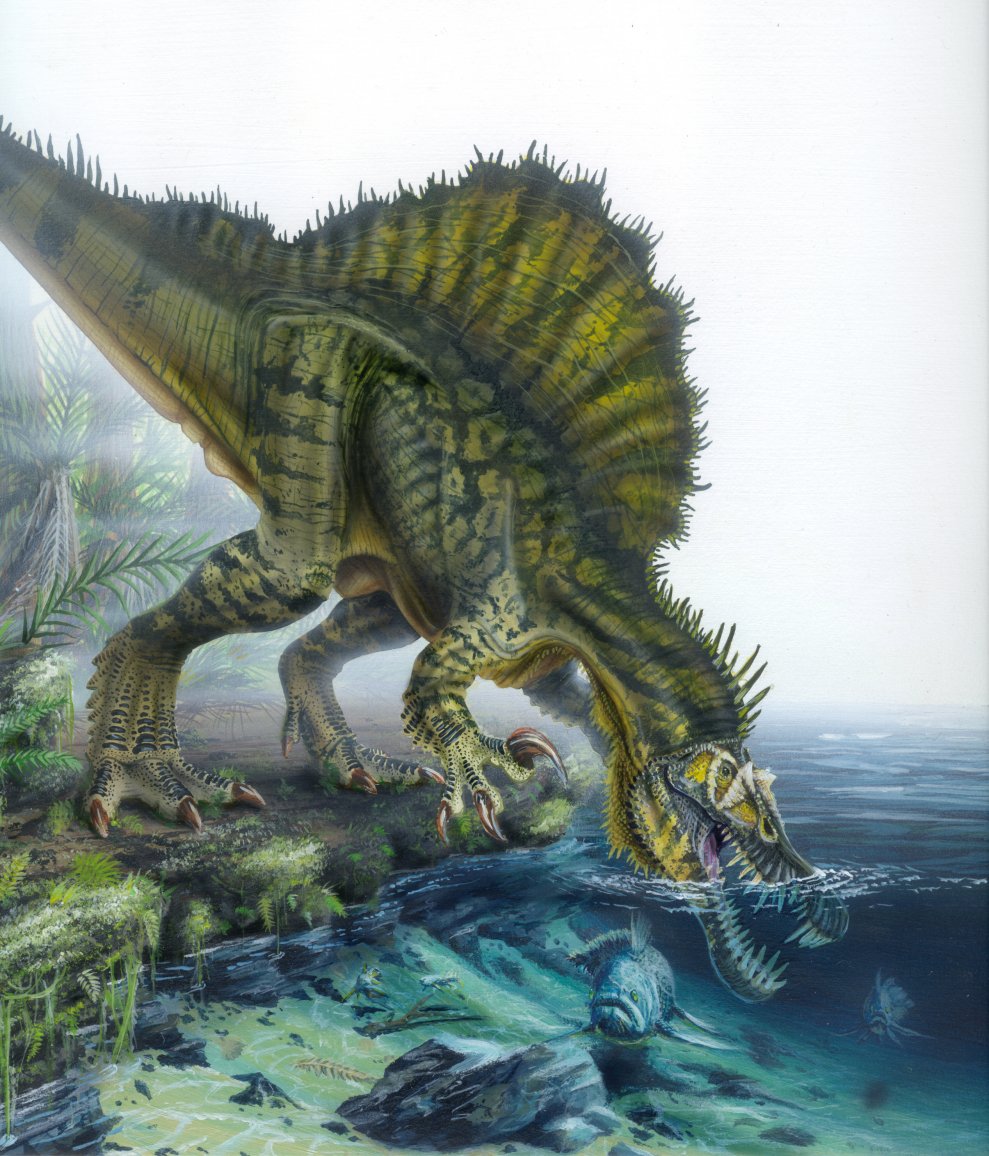
▲ Fishing Spinosaurus (illustration by Todd Marshall)
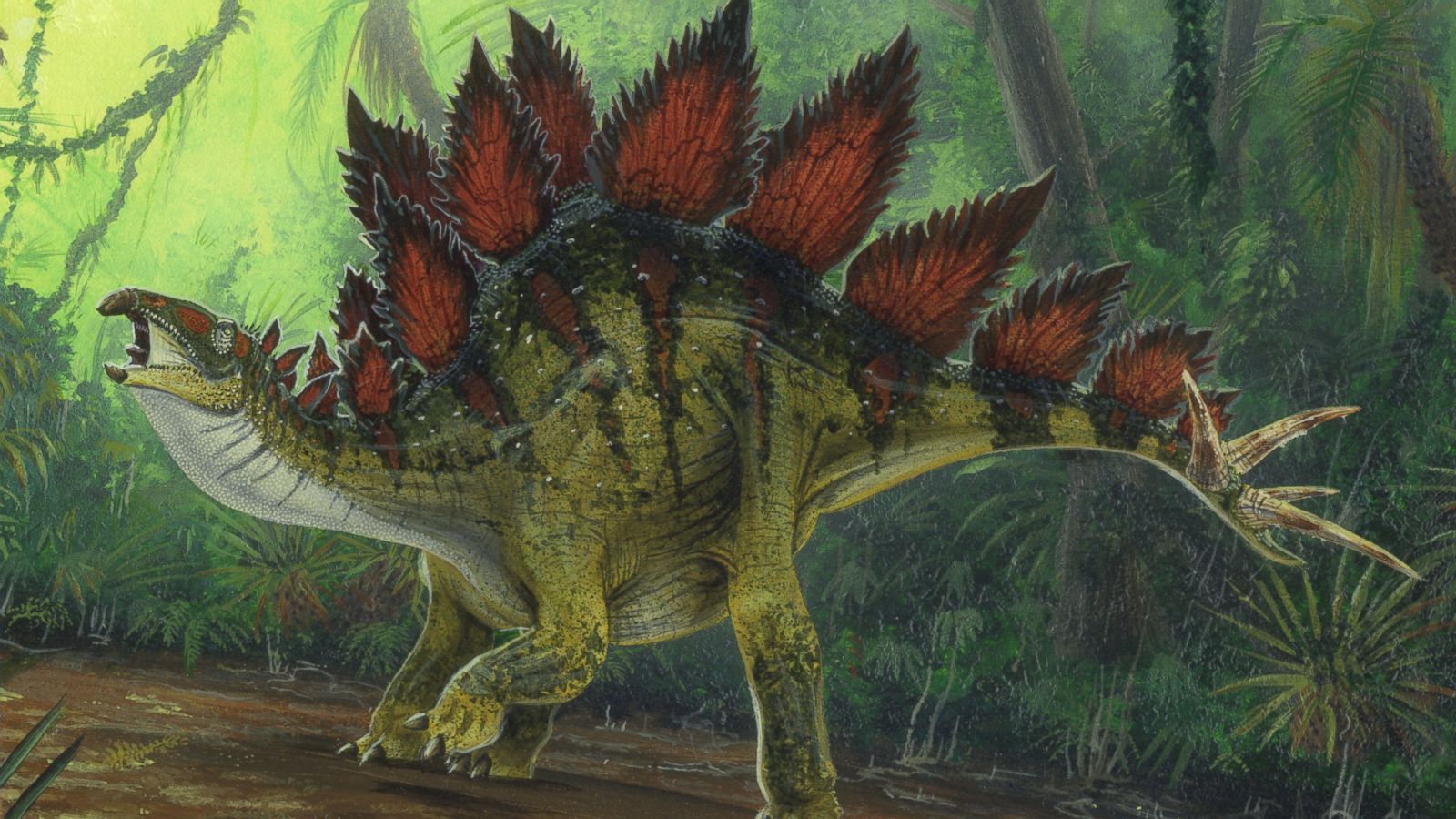
▲ Stegosaurus (illustration by Todd Marshall)
A Kőzetek Naplója: Your career is something to be jealous of, you know? *laughs* Jokes aside – in the past few decades, you’ve been all around the world, you visited Argentina, China, and New Mexico among others. Which trip was the most memorable?
Steve: I’ve been very fortunate to work with a lot of amazing colleagues around the world. It is hard to pick a favorite. But because I am doing this interview in association with the Hungarian translation of my book, I will go with a Transylvanian adventure. I spent several field seasons in the former Hungarian parts of Transylvania (now Romania) with my dear friend Mátyás Vremir, who sadly died in 2020. We would walk through rivers, picking up dinosaur bones in the shadows of ancient castles. It was like a fairy tale. Or a Dracula story.
▲ „...when we’re together in Romania, me all festooned in my pricey field gear and Mátyás strolling along in his board shorts, cigarette dangling from his lips, it’s always he who sees the good fossils.” (photo credit: Steve Brusatte)
A Kőzetek Naplója: You’ve had the opportunity to work with several famous paleontologists, the big shots of this profession. Who made the most lasting impression, and what exactly was it?
Steve: I cannot pick just one person, so I will note my three mentors: Paul Sereno as an undergraduate, Mike Benton as a Masters student, and Mark Norell as a PhD student. They each taught me many things and gave me many opportunities – fossils to study, fieldwork expeditions to take part in, methods to learn. And I must also shout out to my high school geology teacher Joe Jakupcak – he taught me how to find fossils... real fossils! – back home in Illinois, and I will be forever grateful. He showed me how addictive it is to find fossils, to be the first person to ever see a bone or tooth or shell that is millions of years old.
A Kőzetek Naplója: I was quite touched when I read the part about Mátyás Vremir. Can you tell us a bit more about your friendship?
Steve: Matyi was an amazing guy, a character and a friend unlike anyone I’ve ever known. He was unique. And he was a great fossil collector – he had the best eye for finding fossils of anyone I’ve ever worked with. I first met him in 2010, after he emailed my PhD advisor, Mark Norell, to show photos of a strange new tiny dinosaur he found in Transylvania. That turned out to be the skeleton of Balaur, the double-clawed raptor. Mark and I got on a plane to Bucharest to meet Matyi and his colleague Zoltán Csiki-Sava, and for one week we studied and described the Balaur skeleton together. Then we started doing fieldtrips together in Transylvania. Matyi knew the land so well. He had a sixth sense for fossils. And he was a noble and loyal friend. If I were ever stuck in any crazy part of the world, in a war or in prison or in any other bad situation, Matyi would be the one guy I would want by my side.
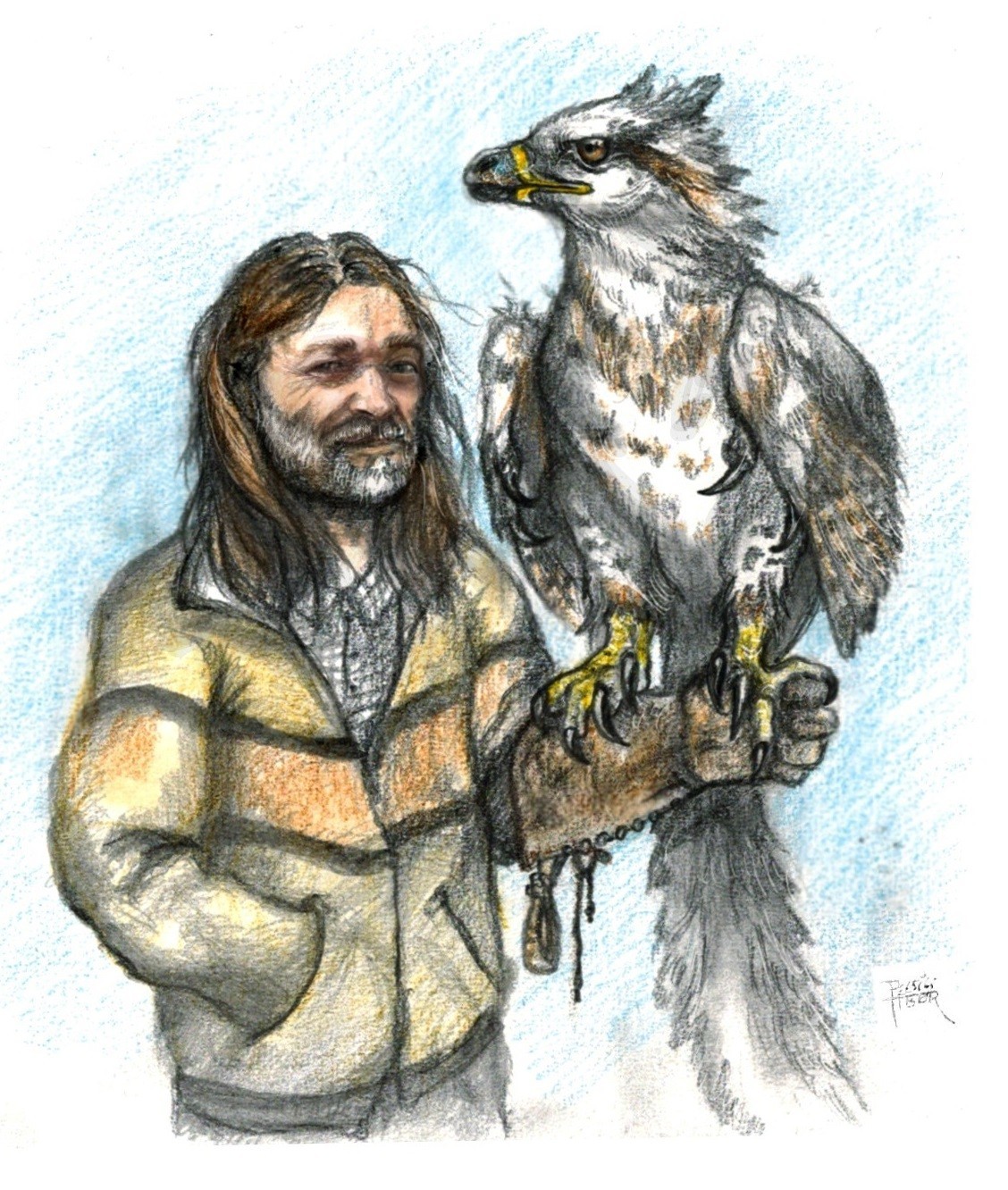
▲ Matyi and his „stocky dragon”, Balaur bondoc (illustration by Tibor Pecsics)
A Kőzetek Naplója: When you were writing about the dwarf dinosaurs of Hátszeg, the work of Ferenc Nopcsa also came up. When did you first hear about the adventurous life of our baron? How important do you consider his legacy?
Steve: Nopcsa is one of the all-time great paleontologists. I learned about his work when I was an undergraduate student, or maybe even before, when I was in high school and learning about dinosaurs by reading books. Nopcsa was THE guy who properly began the study of dinosaur paleobiology, seeing dinosaurs as not just old bones but as animals that were once alive. He figured out that the strange, tiny dinosaurs in Transylvania once lived on an island. Few paleontologists rival his accomplishments. And that’s only his scientific achievements. He was also the most remarkable character, I think in the history of our science. I mean, he was a spy, he tried to install himself as King of Albania, he survived gunshots and uprisings, he was a baron. And it goes on and on. I sometimes wonder if this guy was real, or a character invented by a mad Hollywood screenwriter or novelist.
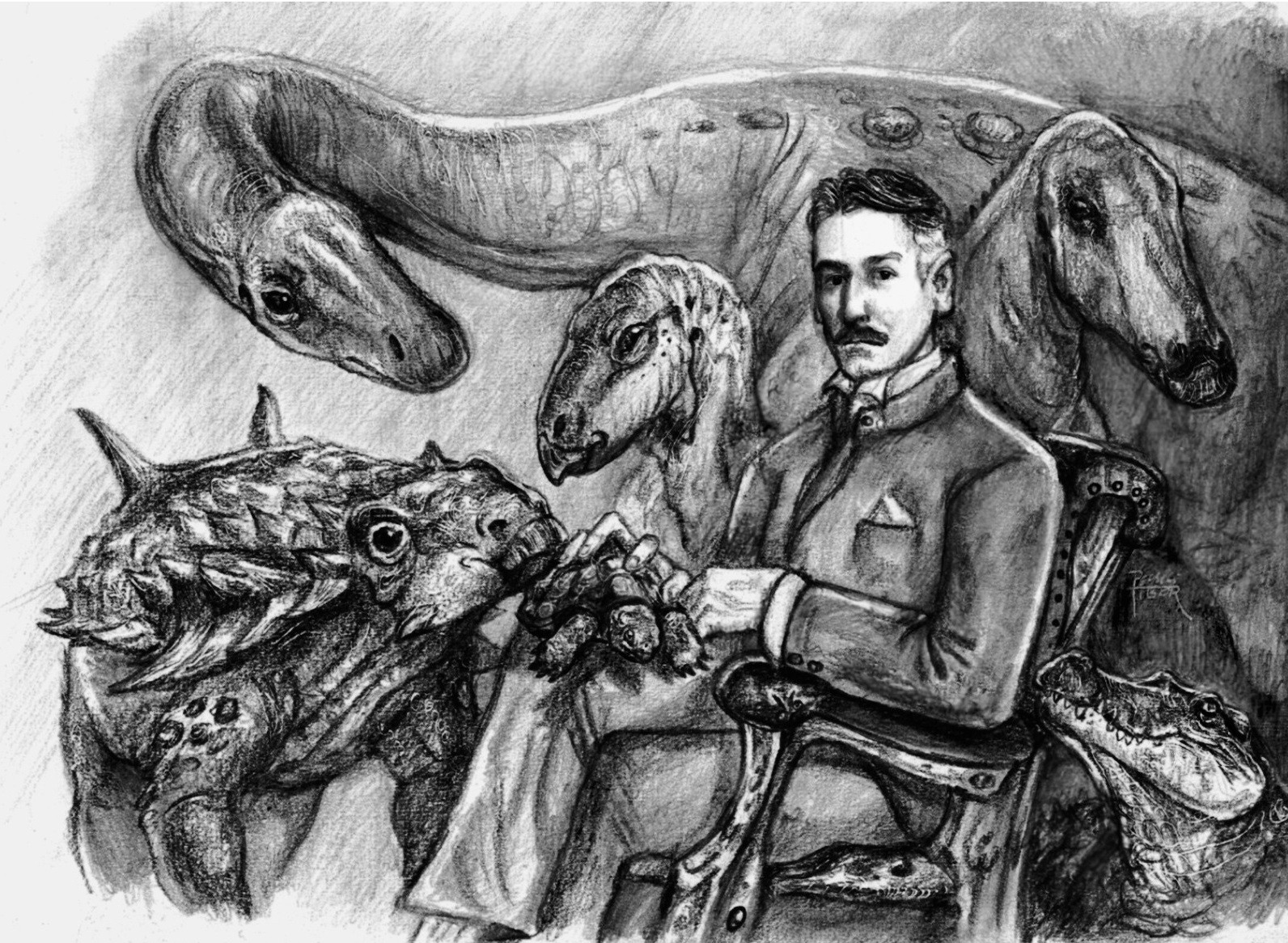
▲ Baron Nopcsa among his prehistoric creatures (illustration by Tibor Pecsics)
A Kőzetek Naplója: While we’re on the topic of Hungarian contributions… Do you usually pay attention to the discoveries made in Hungary? Iharkút may ring a bell!
Steve: Yes! I am constantly awed by the new discoveries in Hungary. Attila Ősi is a friend of mine, and he and his team have made so many important finds that help us understand how dinosaurs were evolving in the Cretaceous in Europe. Attila is a nice guy and a very, very clever scientist, and he’s one of the best at finding and identifying bones and teeth – not only of dinosaurs, but of crocodiles and lizards and so many other animals.
A Kőzetek Naplója: T. rex was an apex predator with highly developed senses, so it rightfully sits on its throne, but in the minds of many it still lives on as a mindless killing machine. Together with your colleagues, you have tried to dispel this deep-rooted misconception... How much has the image of T. rex changed, in your experience?
Steve: T. rex was a killing machine. It was the biggest, baddest pure predator that ever live on land in the entire history of the Earth, as far as we know. It bit so hard it crushed the bones of its prey. That is all true. But: we now know that T. rex was also smart. It had a big brain for a reptile its size, it had great eyesight and smell and hearing. We’ve only discovered this recently, by CT scanning T. rex skulls to see inside its head and reconstruct what its brain and sense organs were like. What made T. rex special was that it had both brawn AND brains.
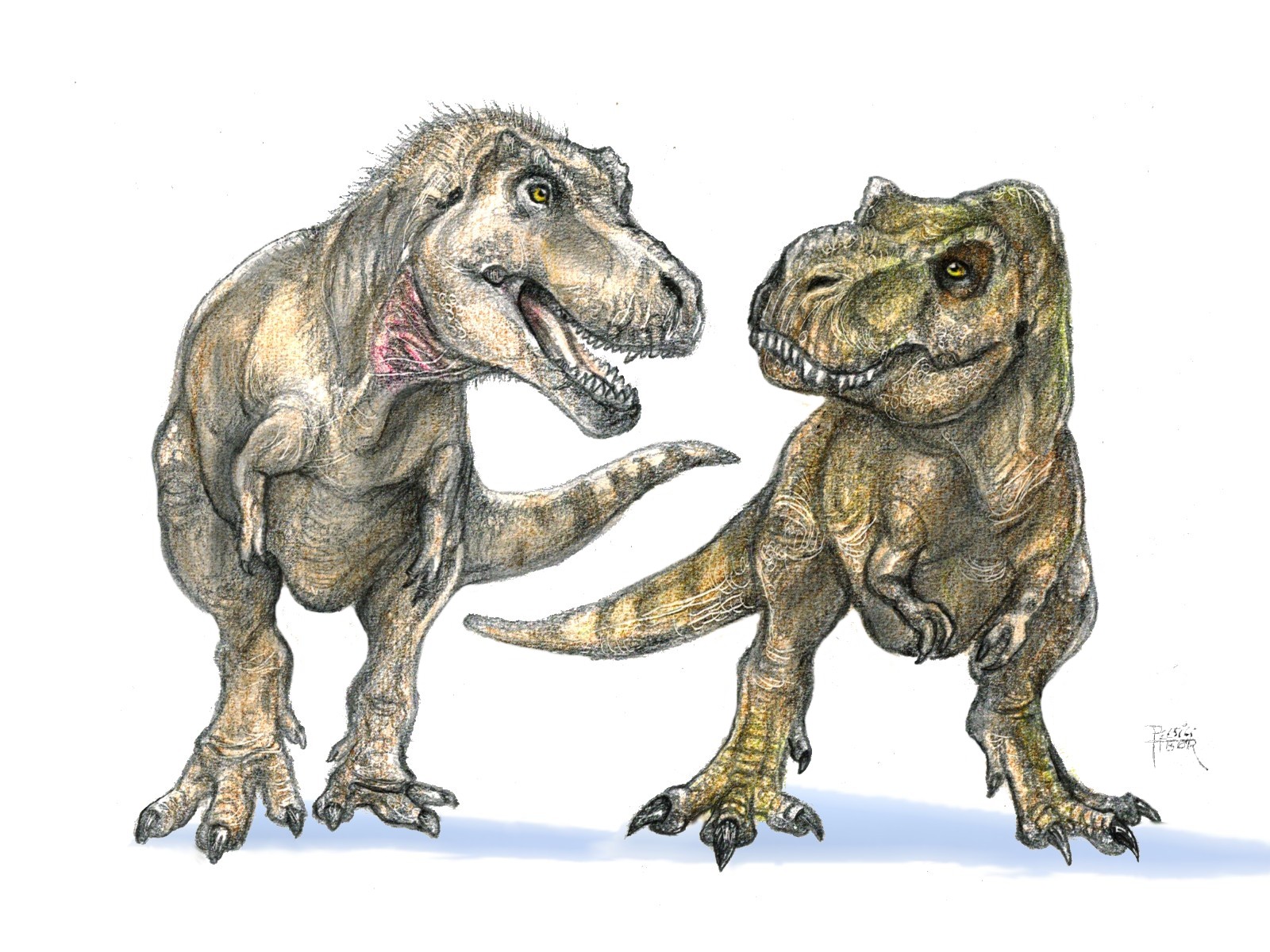
▲ Reality versus fiction: a T. rex and Rexy from Jurassic Park (illustration by Tibor Pecsics)
A Kőzetek Naplója: The bright lucky star of the dinosaurs went down at the dusk of the Cretaceous. Studying the mammals that lived soon after the terrible disaster that ended dinosaurs’ reign is incredibly exciting, yet at the same time, the topic gets talked about undeservedly little, I think. Why did you start studying them?
Steve: To me it was a natural progression. I have studied dinosaurs from their origin through the evolution of feathers and flight and birds and up to their extinction. So where to go from there? Just keep moving on, and study what happened AFTER the extinction. When the dinosaurs departed, the mammals took over, and that’s what I’m studying now.
A Kőzetek Naplója: What kind of research you are doing right now?
Steve: I’m still studying dinosaurs. I will always be fascinated by dinosaurs, and will never stop studying them. Just a few weeks ago my colleagues and I announced the discovery of a beautifully preserved dinosaur embryo inside its egg, curled up with its head under its arm just like a bird in its egg. But I’m really spending more of my time on mammals these days. I have a big team of students and postdocs working with me in Edinburgh, and with colleagues abroad, and we’re trying to put together the most comprehensive family tree of early mammals, to understand how they survived the end-Cretaceous extinction and took over from the dinosaurs. It’s a great story. And it’s OUR story.
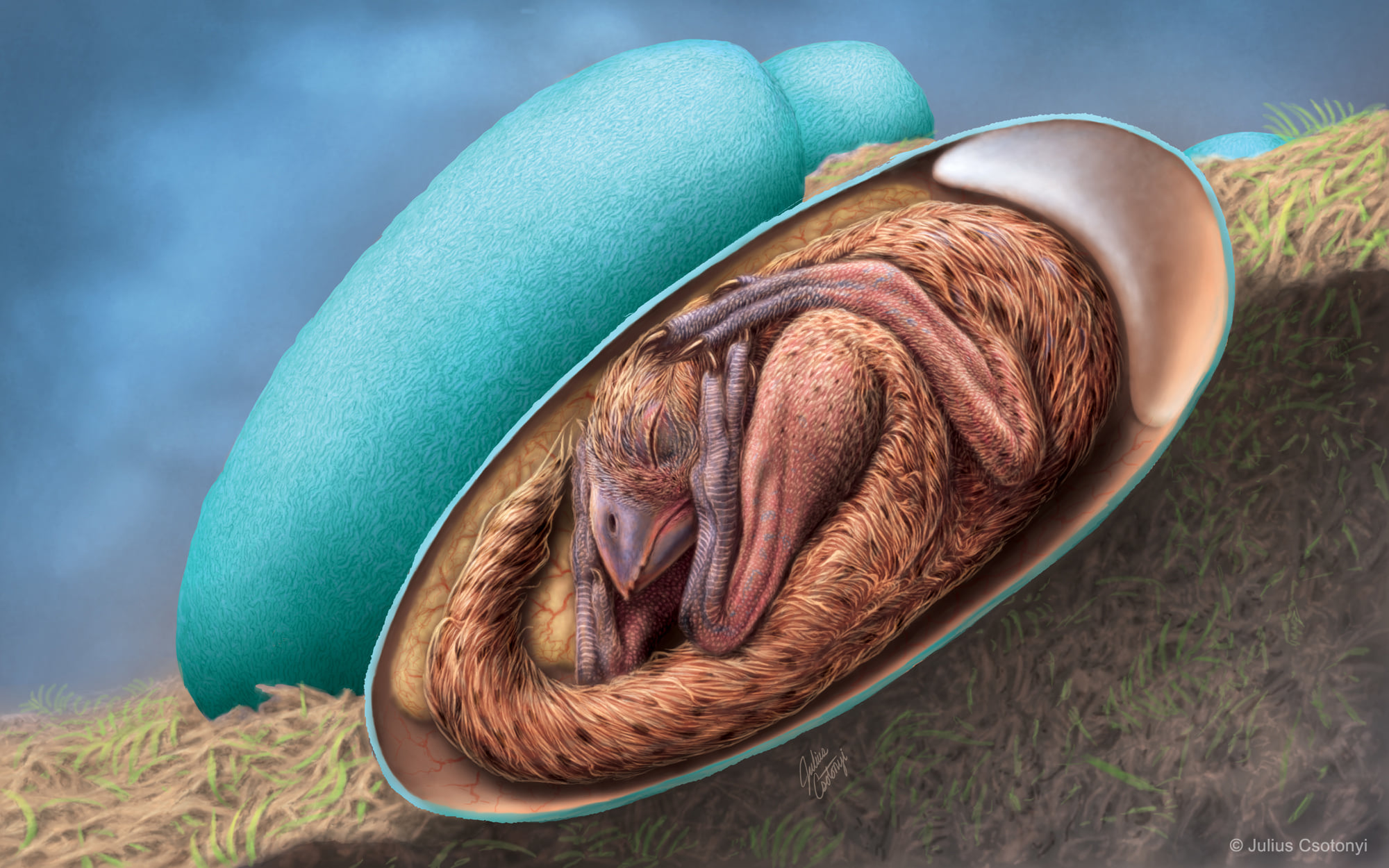
▲ An oviraptorosaur chick inside its egg (illustration by Julius Csotonyi)
A Kőzetek Naplója: Only tell us if it is not a big secret: are you considering writing another book?
Steve: Oh yes. I will have my next book published in English this June. It will be about mammal evolution. It will trace the story of mammals from 325 million years ago, when the mammal lineage split from the reptile lineage, through the evolution of humans until today. It will be written in the style of The Rise and Fall of the Dinosaurs – fast-paced, hopefully accessible for a general audience, with lots of stories of fieldwork and discoveries and adventures. I hope people enjoy it the same way they enjoyed my dinosaur book. I also hope there will be a Hungarian translation (hint, hint if my publishers are reading this).
A Kőzetek Naplója: They'll hear the news, don't worry about it! *laughs* Would you like to send a message to your Hungarian readers?
Steve: Hungary, like Scotland where I live now, is a small country in terms of land and population. But Hungary, like Scotland, has many amazing fossils. I am so happy that Attila Ősi and his team have been discovering dinosaurs in Hungary. And I’m happy to be part of Matyi and Zoltán’s team working across the border in Romania. There are so many important new dinosaurs to be found in Hungary (and Romania). To me this is one of the most exciting places in the world for new discoveries. So keep your eyes focused on the ground and maybe you will find a new dinosaur!

▲ What a catch! (photo credit: Steve Brusatte)
Dear Steve! Thanks again for this wonderful opportunity, it’s been an honor! I hope you’ll have a future rich with successes and many discoveries!

Many thanks to my dear friend Tibi Pecsics for the excellent illustrations, to the absolute unit Ricsi Szénégető for his advice and to my younger brother, Ákos Fejes for helping with the translation! I’ll be forever grateful!

